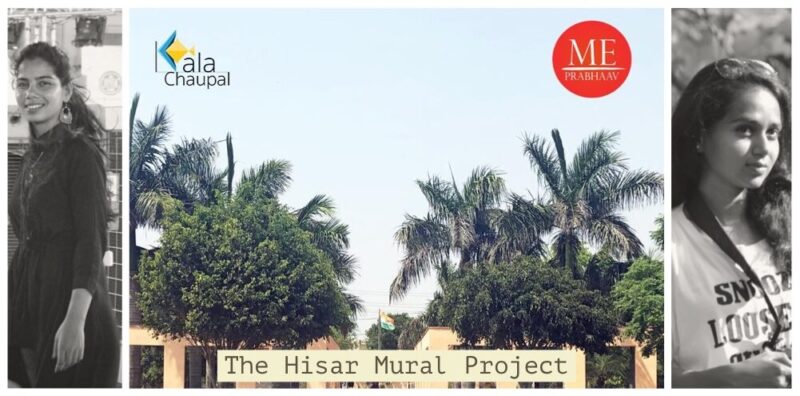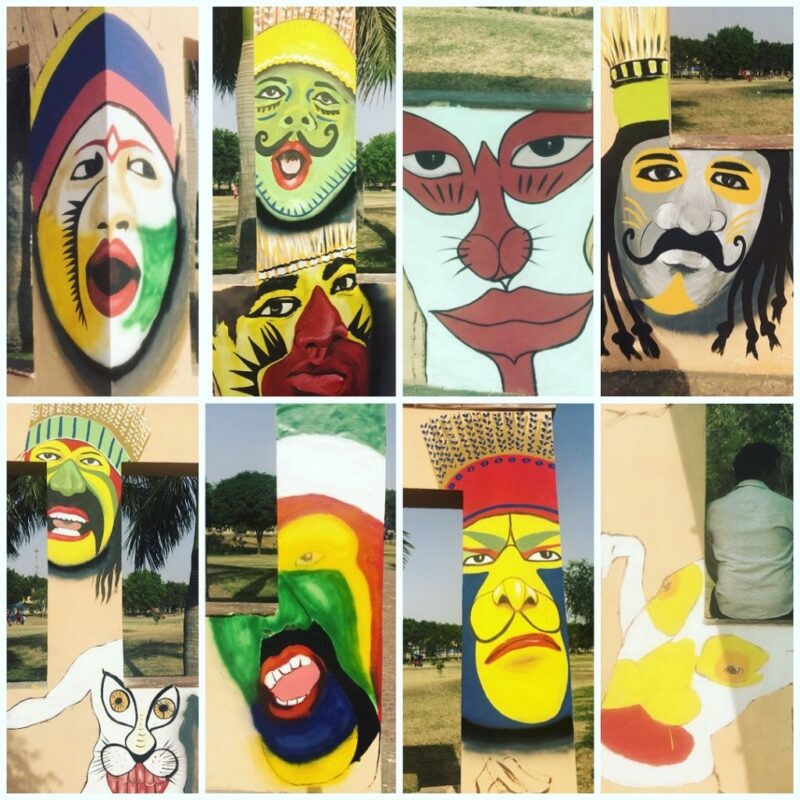Envisioned as a community mural project, the Hisar Mural Project was part of a park beautifying collaboration with the NGO Prabhaav Foundation for the O.P. Jindal Park in Hisar. The murals were conceptualised by The Kala Chaupal Trust and executed by muralists/artists Shikha Patel and Jyoti Saini.
The murals captured the history and heritage of Hisar through a presentation of it’s rich arts and culture and historical significance. The inclusion of aesthetics that are significant to the local fabric of people requires attention in most cities of India.

3500 sq feet of mural was painted over 20 days by 2 muralists with support from local communities.
There is a need to build socio-cultural relevance and aesthetics into the development of cities in India. It’s crucial to educate the new generation on the rich cultural heritage that is part of our inheritance.
Hisar a classic Tier-B town in Haryana, India has limited and literally no space for artistic pursuits. Hisar is well known for its steel industry and is therefore also known as “The City of Steel” and is also hosts the headquarters of Jindal Steel.
The O.P. Jindal Park offers an open space and an opportunity to create community interactions to support both performing and visual arts through artist walks, art performances and historical story telling.

The city of Hisar was founded by a Muslim ruler, Firozshah Tughlaq in 1354 A.D. ‘Hisar’ is an Arabic word which means ‘Fort’. The city, which we know today as ‘Hisar’, was originally called ‘Hisar Firoza (also Hisar-e-Firoza) or in other words the ‘Fort of Firoz’.

